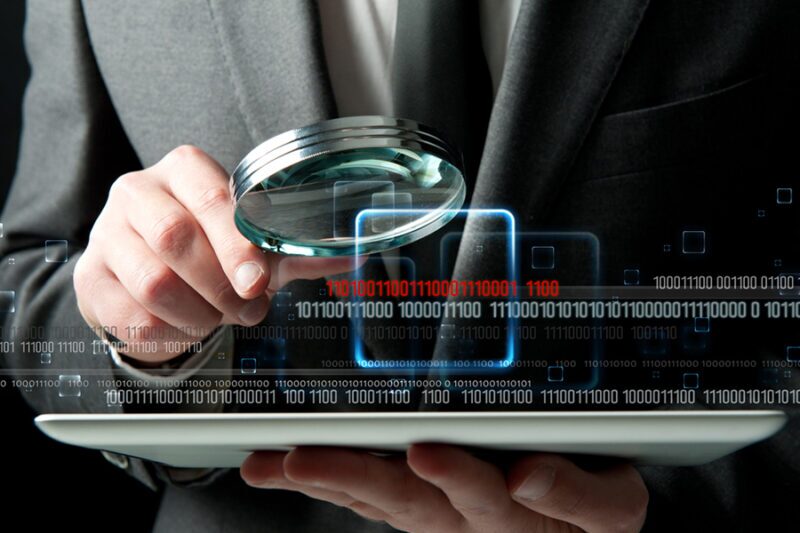In the evolving landscape of cybersecurity, understanding “what is digital forensics in cybersecurity” is crucial. Digital forensics, a pivotal aspect of information technology, plays a significant role in identifying and combating cyber threats. This field, closely related to computer forensic science, involves meticulous procedures to collect, analyze, and store digital evidence. As cyber-attacks become more sophisticated, the expertise of computer forensics and IT security professionals becomes indispensable. This blog delves into the intricacies of digital forensics, shedding light on its components, techniques, and undeniable importance in safeguarding digital data and systems.

What is Digital Forensics?
Digital forensics, or computer forensics or cyber forensics, is a specialized field within cybersecurity focused on investigating compromised data or systems and uncovering evidence from digital devices. It involves analyzing data from various sources like personal computers, mobile devices, and network systems. Digital forensics experts employ investigative techniques to identify and retrieve encrypted or deleted data, making it a critical component in solving cybercrimes. Understanding computer forensics is essential for professionals dealing with incident response and threat detection, as it provides valuable insights into the nature of cybersecurity threats.
The Role of Digital Forensics in Cybersecurity
The role of digital forensics in cybersecurity is multifaceted. It extends beyond mere data recovery; it’s about securing the integrity of information systems and ensuring the resilience of computer systems against cyber attacks. Computer forensic specialists are the frontline defenders in identifying and mitigating cybersecurity threats. Their expertise in memory forensics, malware forensics, and network forensics enables them to analyze volatile data and trace the origins of cyber attacks. By preserving compromised data and conducting thorough investigations, these professionals play a crucial role in preventing and responding to security breaches, ensuring digital evidence can be made available for third-party scrutiny and that, when necessary, it can be presented in a court of law.
Key Components of digital forensics
Digital forensics comprises several key components, each vital for a comprehensive investigation. The first is collecting digital evidence from various sources, including storage media, operating systems, and network traffic. Next is the analysis phase, where forensic investigators scrutinize the collected data to uncover evidence of cybercrimes. This phase often involves techniques like live analysis and cross-drive analysis. The final component is the legal aspect, where the evidence is presented in a manner suitable for legal proceedings. Each component is crucial in building a solid case against cyber criminals.
Data Collection and Preservation
Data collection and preservation are foundational steps in computer forensic investigations. This process involves carefully extracting data from digital devices while maintaining its integrity. Forensic investigators use specialized tools to collect evidence from storage media, ensuring that the volatile data in random access memory (RAM) is not lost. Techniques like database forensics and email forensics are employed to retrieve valuable information from various sources while adhering to the four principles of digital evidence of the Association of Chief Police Officers (ACPO). Preserving this data in a secure facility is crucial, as it forms the basis of the investigation and subsequent legal proceedings.

Analysis and Investigation
Analysis and investigation in digital forensics involve a deep dive into the collected data to identify patterns and anomalies indicative of cybercrimes. Computer forensic specialists use advanced technology to analyze data from multiple computer drives, uncovering hidden or encrypted data. This phase often reveals crucial insights into the nature of the cyber attack, the extent of the data breach, and the identity of the perpetrators. Techniques, like deleted file recovery and malware analysis, are commonly used to assemble the digital puzzle.
Reporting and Legal Considerations
Reporting and legal considerations in digital forensics are critical, as the findings must be documented accurately for legal scrutiny. Forensic investigators prepare detailed reports outlining their investigation, analysis, and conclusions. These reports are essential for legal proceedings, providing a documented chain of evidence. Computer forensics experts must adhere to strict legal and ethical standards according to the principles of digital evidence of ACPO to ensure their findings are admissible in court. This aspect underscores the importance of a solid understanding of technology and law.
Types of Digital Forensic Investigations
Digital forensic investigations encompass a range of specialized areas, each targeting different aspects of digital forensics. Each type employs unique investigative techniques and tools to address specific challenges. From analyzing data traffic in networks to scrutinizing personal computers and investigating mobile devices to probing cloud storage, these diverse forensic fields collectively strengthen cybersecurity defenses. Understanding these types is essential for forensic investigators, as it allows them to tailor their approach to the specific nuances of each case.
Network Forensics
Network forensics is a critical branch of digital forensics focused on monitoring and analyzing computer network traffic for information gathering, legal evidence, or intrusion detection. This type of forensic investigation is vital in identifying and responding to cyber attacks, network breaches, and other security incidents. Network forensic specialists use various tools to capture and store network data, which is then meticulously analyzed to uncover unauthorized access, malicious activities, and sources of security threats. The insights gained from network forensics are vital for threat detection and ensuring the security of information systems.
Mobile Device Forensics
Mobile device forensics is a specialized field within digital forensics that deals with recovering and analyzing data from mobile devices, such as smartphones and tablets. Given the ubiquity of mobile devices, this branch of forensics plays a crucial role in modern investigations. Mobile forensics specialists focus on retrieving data like text messages, emails, photos, and application data from mobile devices, often working against the challenges posed by device encryption and the constant evolution of mobile operating systems. The evidence gathered from mobile devices can be pivotal in criminal and civil investigations.

Cloud Forensics
Cloud forensics is an emerging field in digital forensics, addressing the challenges of investigating data stored in cloud computing environments. As more organizations and individuals store data on cloud services, the need for cloud forensics has grown significantly. This type of forensic investigation involves analyzing data hosted on remote servers, including emails, documents, and complex databases. Cloud forensics specialists must navigate the intricacies of cloud architecture, dealing with issues like data sovereignty, multi-tenancy, and the distributed nature of cloud storage. The ability to effectively conduct cloud forensic investigations is becoming increasingly important as cloud services expand.
Tools and Technologies in Digital Forensics
The tools and technologies used in digital forensics are diverse and constantly evolving. They range from software for analyzing data and recovering deleted files to hardware designed for extracting data from damaged devices. These tools enable forensic investigators to conduct thorough investigations and respond effectively to cybersecurity incidents. Advanced technologies like artificial intelligence and machine learning are increasingly being integrated into forensic tools, enhancing their threat detection and the success of incident response.
Challenges in Digital Forensics
Challenges in digital forensics are ever-present and evolving as technology advances. One of the primary challenges is dealing with sophisticated malware that can hide data inside systems or encrypt information, making it difficult to retrieve. Another challenge is the increasing volume of data and the complexity of modern computer systems and networks. The challenge of end-to-end encryption, known as the cryptography dilemma, has a broad range of implications for the future of data privacy regarding legal investigations. Forensic investigators must continuously update their skills and tools to keep pace with these advancements and effectively uncover evidence in complex cybercrime scenarios.
The Future of Digital Forensics in Cybersecurity
The future of digital forensics in cybersecurity looks to be a dynamic and integral part of the field. As cyber threats become more advanced, the role of computer forensic science will continue to grow. Emerging technologies like blockchain and quantum computing are expected to bring new challenges and opportunities in digital forensics. The field will likely see increased collaboration between cybersecurity professionals and law enforcement agencies as they work together to combat the evolving landscape of cybercrime.
About the Author: EIRE Systems
EIRE Systems is a leading independent provider of professional IT, AV and Access Security services to the financial, insurance, manufacturing, health care, retail, construction, hospitality, commercial real estate, legal, educational and multinational sectors in Japan and throughout the Asia Pacific region. EIRE Systems has expertise across a wide spectrum of Information Technologies, with a track record for successfully completing hundreds of assignments since its establishment in 1996.



